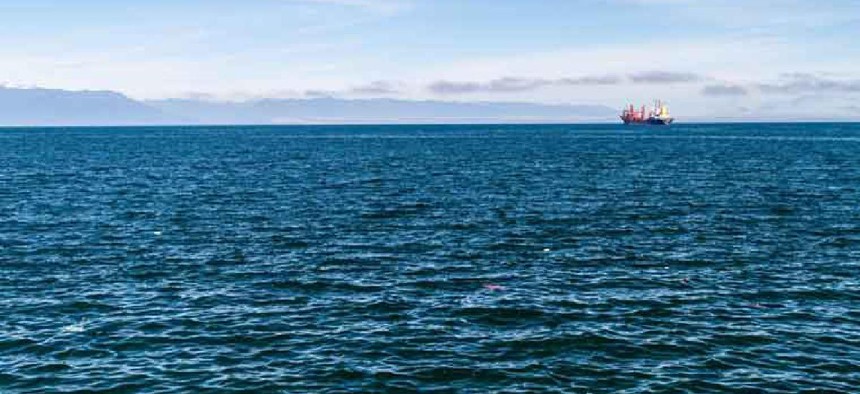DARPA takes the IoT to sea


Connecting state and local government leaders
The Ocean of Things program envisions a network of low-cost, sensor-enabled floats that collect, transmit and analyze environmental data via satellite for real-time monitoring of maritime activity.
The Defense Advanced Research Projects Agency's Ocean of Things (OoT) program is picking up steam.
Today's internet-of-things sensors collect data on electric grid performance, fleet management, earthquakes and storm water runoff. In the open ocean, however, it has been impractical to deploy such connected sensors, due to the vastness of the sea and the sparseness of the data. That means situational awareness data can only be collected from sensors on military and commercial vessels or from remote sensors, which are subject to constraints from the physical environment, such as fog, rain or cloud cover.
The OoT program aims to change that. First announced in 2017, the initiative envisions a network of small, low-cost, sensor-enabled floats that collect, transmit and analyze environmental data via satellite for real-time monitoring of maritime activity. The distributed sensor network will be made up of thousands of floats that monitor ocean temperature, sea state and location and activity of maritime vessels, aircraft and even marine mammals. The floats would transmit data periodically via satellite to a cloud network for storage and real-time analysis.
OoT floats rely on low-cost commercial hardware and sensors, which allows for the manufacture of a large number of floats carrying different sensors to cover large ranges and provide robust data from areas where limited visibility exists today. With efficient signal processing the floats can conserve energy and the limited communications bandwidth available. The environmentally friendly floats are designed to minimize the use of plastics, avoid interaction with wildlife, avoid protected areas and safely degrade once they have exceeded their lifespan.
Examples of data collected from the floats include sea surface/air temperature, acoustic ambient noise, wind speed, wave dynamics, float motion, generation of vessel tracks, multi-spectral vessel signatures, and vessel behavior, according to DARPA. OoT also requires advanced analytics to predict and track the health and location of the floats and to process the collected data for oceanographic and meteorological models as well as vessel detection.
Cloud-based data analytics will depend on machine learning to uncover insights from sparse data.
“We’re actually trying to process at the edge, and that’s a real hard challenge that we’re just now getting to,” John Waterston, a program manager within DARPA’s Strategic Technology Office, told Signal Magazine. “We’re doing a DevOps environment in the Amazon Web Services GovCloud.”
Among the tools DARPA is using are edge software and a smart IoT management platform from Numurus. "These tools together produce a full-spectrum sensor-to-cloud solution capable of detecting minor changes in the environment, reducing megabytes of sensor data into kilobytes of information at the collection source, and transmitting that information through Iridium satellites to a secure firewalled cloud infrastructure," according to the company.
In the second phase of the program, DARPA is looking to advance early solutions to its twin technical challenges – float development and data analysis – and is holding events with potential float design proposers and data analytics users.
The OoT program is part of DARPA's "mosaic warfare" concept in which individual warfighting and sensor platforms can be assembled like tiles into a system large enough to overwhelm the enemy.
NEXT STORY: Faster, safer bridge inspections




